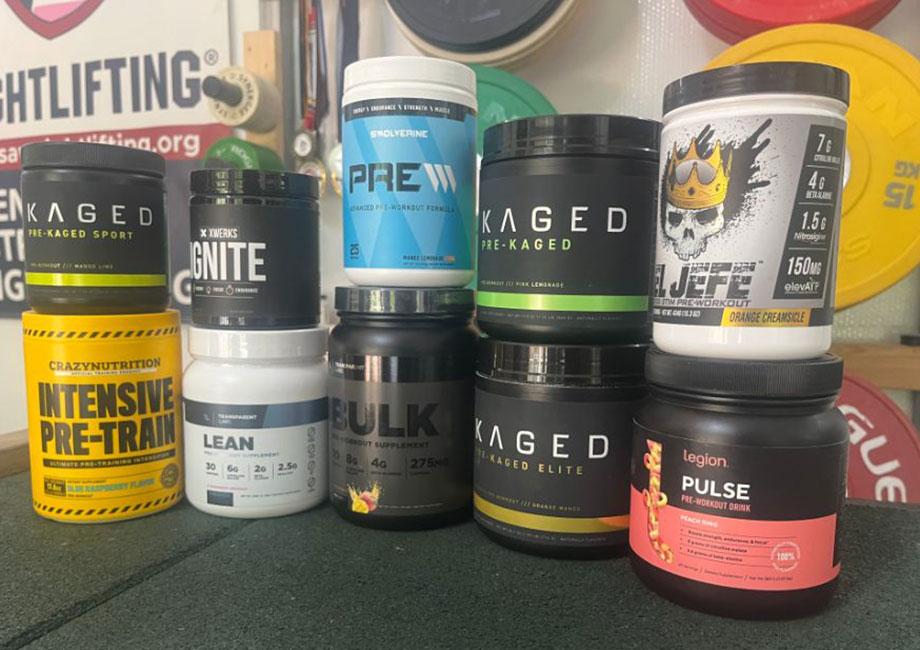A native of Peru’s Andes, maca1 is a cruciferous plant, and it’s most closely related to vegetables like cabbage, watercress, and black mustard. As maca grows extremely well in the Peruvian Andes range, and has been used as a natural remedy for thousands of years, it has become a popular herb in this region of the world. Due to the recent popularity of the use of maca powder as a supplement, however, it is now grown in countries all over the world.
Maca is a superfood that can support general health and well-being. It offers good amounts of iron and iodine, the latter of which is hard to obtain naturally from most diets. It also contains other minerals such as calcium, potassium, and amino acids.
Although maca has long been touted as a dietary health supplement, there is currently little research on its effects and although there are some promising benefits, study results are mixed. Despite the need for more research, we will discuss what current studies consistently find about maca’s benefits, as well as the best time to take maca root in order to reap these benefits.
Medical disclaimer: This article is intended for educational and informational purposes only. It is not intended as a substitute for medical advice. For health advice, contact a licensed healthcare provider.
When Is the Best Time to Take Maca Root?
Let’s get right to the good stuff—when should you consume maca root?
A big advantage of taking maca supplements is that you can time the consumption around when you need the benefits the most. Generally, the best time for people to take maca root is in the morning, as it is said to increase energy levels as a result of its reported energy-boosting properties.
However, another ideal time would be to take maca before a workout. Both men and women alike could benefit from blending maca powder with their pre-workout for an added energy boost. Due to reports that maca can cause insomnia when it is taken too close to bedtime, it is generally not recommended to supplement with maca at night.
RELATED: Best Pre-Workout For Men
What Is Maca Root?
Now back to the basics: Maca root, also known as lepidium meyenii, was once the best-kept secret of the Andes mountains, but has recently achieved worldwide popularity. Shaped like a small radish, which is about the size of a walnut, this superfood is an adaptogen, which is a family of plants that assists the body’s response to stress, anxiety, and fatigue.
In the maca plant, it is the roots that contain the bioactives that are responsible for giving the plant its beneficial properties for humans. In recent years, there have been a number of studies that have demonstrated the positive effects of the maca root on a variety of bodily functions, from improving sexual health to stabilizing mood swings.

In ancient times, the Andean people consumed maca in fermented drinks and porridges to treat conditions like arthritis and thyroid disorders, and they even traded it for goods as currency1.
There are 13 varieties1 of this Peruvian superfood, but only three have been studied: black maca, yellow maca, and red maca. Although there is a limited amount of research behind yellow maca, black and red maca have both been shown to possess their own unique benefits, which we will explore in more detail below.
Benefits Of Maca
Maca has several documented beneficial effects—let’s take a look.
Supports Energy
Legend has it that Incan warriors took maca before going into battle to increase their strength and vitality. This is one reason maca extract has been called the Peruvian ginseng, due to ginseng also having a boosting effect on energy levels.
One randomized controlled trial2 revealed that adults taking 3 grams of red maca daily reported higher energy levels when compared to the group given a placebo.These findings are one reason maca root powder is becoming a common ingredient in pre-workout and BCAA, or branched chain amino acid supplements.
Supports Sex Drive
Maca contains unique nutrients, antioxidants, and other compounds that many researchers believe give the superfood properties of an aphrodisiac. A 2015 trial3 revealed that maca root powder helped to improve sexual dysfunction in postmenopausal women.
Another study4 suggested that black maca helped increase sexual desire in men with erectile dysfunction after six weeks of use. Though more research is needed, it seems you have nothing to lose and more to gain by supplementing with some maca root powder before a date night.
Supports Sperm Count
A 2015 study5 showed that healthy men aged 20 to 40 years old showed an increase in sperm count and fertility without a change in hormones after taking black maca. Studies that have been conducted in similar cases have also confirmed this finding, so men who are struggling with infertility may want to discuss maca with their doctors as an alternative or supplement to other prescription fertility medications.
May Help Ease Symptoms of Menopause
In a systematic review6, several studies found that maca reduces follicle-stimulating hormone levels, which can alleviate some symptoms of menopause. Symptoms such as hot flashes, bone calcium loss, low energy, depression, and reduced sexual drive have been reported to reduce in severity after supplementing consistently with maca.
Can Help with Mood Swings
The same study mentioned earlier found that red and black maca could not only increase energy, but promote positive mood changes as well2. A study7 on postmenopausal women saw a decrease in depression symptoms and even lower blood pressure after taking 3 grams of maca for six to 12 weeks, indicating that maca could have an effect on mood and stress markers as well.
Maca Root Tips
You should consult your healthcare provider before taking maca root. That said, here are some general guidelines on taking this supplement.
Serving Size
The optimal amount of maca, according to the available research, appears to be around 3 grams per day. However, body size and level of activity may modify these needs. Larger individuals and those who are extremely active (such as elite or endurance athletes) have been known to consume up to 9 grams without any reported side effects.
Therefore, it may be best to start with 3 grams at first, and if you feel your body size or physical activity warrants more, you can gradually increase the daily dose. If you are paying close attention to your body, you should know how much to take. In the event that you feel maca may be giving you too much energy, simply take a smaller amount next time.
Storage Guidelines
To maintain maximum freshness of your maca powder, keep the lid on the container at all times and store out of direct light and humidity. In case you have a humid environment, you may want to store your powder in the refrigerator to prevent it from becoming moist. The same storage guidelines apply to maca capsules, although they are much less fragile and prone to spoilage than powder.
How to Consume
The Peruvian maca root is often too tough to eat alone, making the gelatinized (capsule) and extract (powder) forms the popular go-to for consumption. You can take either form, but capsules normally need to be taken multiple times a day to maximize digestion.
So, if you have an issue being consistent with taking pills, using maca powder may be the way to go. Maca powder extract also has greater versatility, such as being able to be blended into soups and smoothies, so many people prefer it.
Side Effects
There is no science to suggest that there are any significant side effects associated with supplementing with maca root. Some anecdotal accounts from some claim insomnia or jumpiness due to the energizing effects of maca root, but there are no available reports that these effects are harmful.
There is not enough evidence to confirm or deny the safety of supplementing with maca while pregnant or breastfeeding, so it is advised to check with your doctor before supplementing if this applies to you.
Interactions
It is advised not to supplement with maca if you suffer from conditions that are sensitive to hormones such as breast cancer, uterine cancer, ovarian cancer, endometriosis, or uterine fibroids, as maca extract can behave similarly to estrogen. If you have any other condition that might be made worse by estrogen, do not use maca extracts.
Also note that some sports supplements like C4 and Alani Nu contain beta-alanine, a compound that plays a role in increasing the amount of work your muscles can do before they get fatigued. It is also the compound responsible for giving you the “tinglies” or the itchy, burning sensation many feel after taking pre-workout.
Though these effects are completely harmless, due to reports that maca can have a similar physiological effect, it may be wise to avoid taking both beta alanine and maca together in a single sitting.
Best Time to Take Maca Root: Final Thoughts
The benefits of maca have been well known for thousands of years by those native to Peru. Though more research is needed to reinforce the preliminary findings of many of its purported benefits, the current science is promising for maca’s likely ability to:
- Provide an energy boost
- Help with sexual function
- Help improve fertility in men
- Assist in relieving menopausal symptoms
- Support stable mood
Because maca root is a naturally occurring compound, the risk of negative side effects is low, especially when taken as directed. There has been no scientific confirmation of significant side effects associated with regular consumption of maca. Thus, if the above benefits sound appealing to you, it’s worth a shot to give this Peruvian ginseng a try.
The best time to take maca root appears to be in the morning, so you can try it in your morning coffee, smoothie, or even your breakfast oatmeal. If you choose to take it in a capsule form, assess how your tummy reacts to it on an empty stomach and then try taking it with food if you experience any upset.
Due to its possible ability to alter hormones, especially estrogen, women with underlying hormonal conditions should not supplement with maca root. Always check with your primary care physician before beginning any herbal or over-the-counter supplement, especially if you take prescription medications.
Best Time to Take Maca Root: Q&A
When should I take maca root, morning or night?
Due to its purported ability to boost energy levels, most people take maca root in the morning. However, if you have a tendency to experience mid-day energy crashes, you may benefit from taking it in the afternoon.
How should I take maca for the best results?
The actual root vegetable of maca is difficult to eat, that’s why it is normally found in a capsule or powder form as a supplement. Either form will yield you the same results when taken as directed.
Is maca best taken on an empty stomach?
Maca powder may be best taken alone and on an empty stomach. There is a higher chance of the maca digesting more quickly if it is not surrounded by other foods in the stomach. Try taking it with food if you have stomach or digestive issues.
What happens if I take maca everyday?
Due to maca being a food, consuming it everyday is classified as safe, as long as you consume the recommended amount. In fact, if you want to get the most health benefits from taking this supplement, it is recommended that you take it at the recommended amount consistently and daily.
These statements have not been evaluated by the Food and Drug Administration. This product is not intended to diagnose, treat, cure, or prevent any diseases.
References
- Gonzales GF. Ethnobiology and Ethnopharmacology of Lepidium meyenii (Maca), a Plant from the Peruvian Highlands. Evid Based Complement Alternat Med. 2012;2012:193496. doi: 10.1155/2012/193496. Epub 2011 Oct 2. PMID: 21977053; PMCID: PMC3184420.
- Gonzales-Arimborgo C, Yupanqui I, Montero E, et al. Acceptability, Safety, and Efficacy of Oral Administration of Extracts of Black or Red Maca (Lepidium meyenii) in Adult Human Subjects: A Randomized, Double-Blind, Placebo-Controlled Study. Pharmaceuticals (Basel). 2016;9(3):49. Published 2016 Aug 18. doi:10.3390/ph9030049
- Christina M. Dording, Pamela J. Schettler, Elizabeth D. Dalton, Susannah R. Parkin, Rosemary S. W. Walker, Kara B. Fehling, Maurizio Fava, David Mischoulon, “A Double-Blind Placebo-Controlled Trial of Maca Root as Treatment for Antidepressant-Induced Sexual Dysfunction in Women“, Evidence-Based Complementary and Alternative Medicine, vol. 2015, Article ID 949036, 9 pages, 2015. https://doi.org/10.1155/2015/949036
- Shin BC, Lee MS, Yang EJ, Lim HS, Ernst E. Maca (L. meyenii) for improving sexual function: a systematic review. BMC Complement Altern Med. 2010;10:44. Published 2010 Aug 6. doi:10.1186/1472-6882-10-44
- Melnikovova I, Fait T, Kolarova M, Fernandez EC, Milella L. Effect of Lepidium meyenii Walp. on Semen Parameters and Serum Hormone Levels in Healthy Adult Men: A Double-Blind, Randomized, Placebo-Controlled Pilot Study. Evid Based Complement Alternat Med. 2015;2015:324369. doi:10.1155/2015/324369
- Lee MS, Shin BC, Yang EJ, Lim HJ, Ernst E. Maca (Lepidium meyenii) for treatment of menopausal symptoms: A systematic review. Maturitas. 2011;70(3):227-233. doi:10.1016/j.maturitas.2011.07.017
- Stojanovska L, Law C, Lai B, et al. Maca reduces blood pressure and depression, in a pilot study in postmenopausal women. Climacteric. 2015;18(1):69-78. doi:10.3109/13697137.2014.929649







